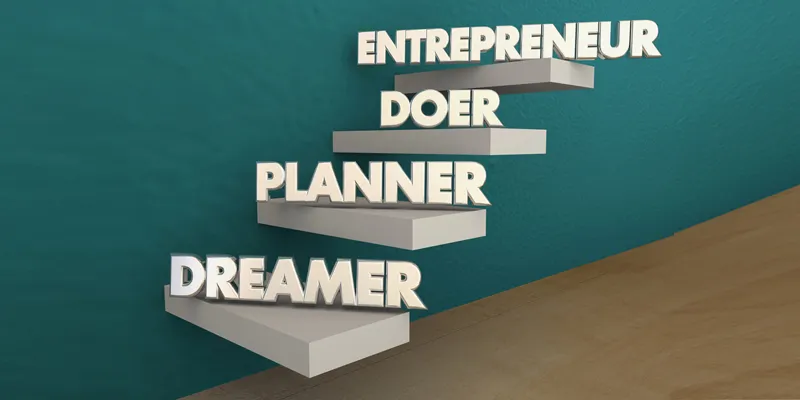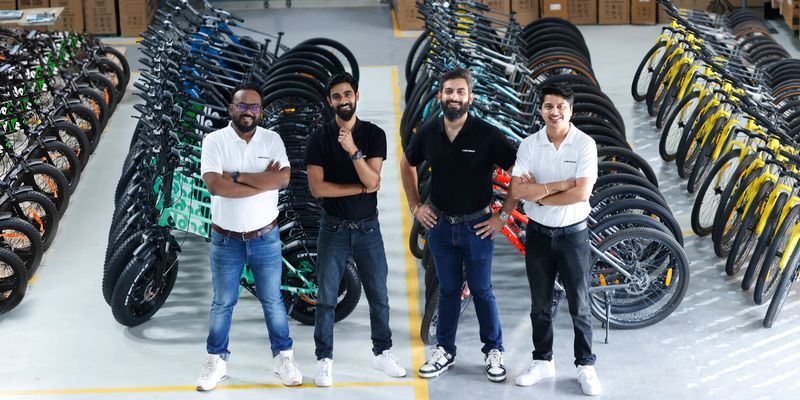'The best teams are like bands of superheroes' – Jeff DeGraff, author, ‘The Innovation Code’
In an exclusive interview with YourStory, author Jeff DeGraff explains the importance of innovation for individuals and organisations. His recent book describes four key archetypes who drive innovation: the Artist (who loves radical innovation), the Engineer (who constantly improves everything), the Athlete (who competes to develop the best innovation), and the Sage (who innovates through collaboration).
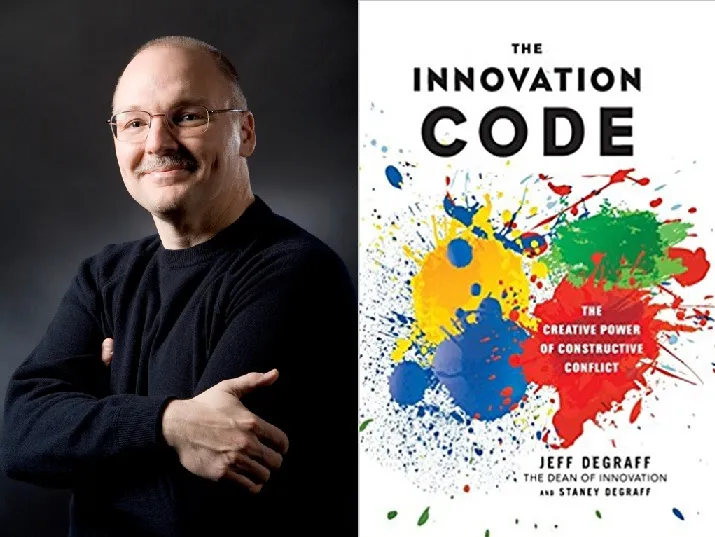
Jeff DeGraff is the co-author of the book The Innovation Code: The Creative Power of Constructive Conflict (see my book review here). He is a professor at University of Michigan’s business school. His other books include Creativity at Work; Leading Innovation; Innovation You: Four Steps to Becoming New and Improved; and The Enlivened Self: The Art of Growing.
Jeff joins us in this exclusive interview on the nature of creativity, organisational innovation, collaborative combinations, the vision of changemakers, and alignment capacity in startups.
YS: What is your current field of research in innovation?
JD: For over 30 years, I have been studying how organisations make innovation happen. In particular, I am interested in how leaders produce an innovative culture, and streamline core competencies that lead to an increase in the value of the enterprise. In other words, how does the whole complex array synchronise to produce something better or new?
YS: How big a role does academics play in innovation? Can innovation really be formally taught?
JD: There’s a lot of controversy surrounding this question, but it is really a matter of degree. Yes, people’s creative abilities can be improved. However, it is unlikely that you are going to become a creative genius like Einstein or Mozart without some natural talent.
Everyone is creative, but in different ways and to varying degrees. Our democratic longing to make everyone and everything equal has led us to make creative greatness indistinguishable from an act of personal expression. What is lacking is meaningful appreciation of the different levels of creativity and how we can use them as steps for increasing our own creative potential.
YS: How was your book received? What were some of the unusual responses and reactions you got?
JD: For the most part, the book was well-received. In an effort to make our work more accessible, we simplified our findings into a comprehensible format. The downside to this approach is that it begins to look like traditional typing indicators, such as MBTI, DISC. But, what we are espousing in the book is radically different.
First, we frame these innovation types within strategic situations. It is really not just about you, but also about having the right person at the right time for the right results. Think of it like a Russian nesting doll. The smallest doll, vis-à-vis you, is not the only important doll. It is about the relationship of all the dolls: the strategic situation, the organisational culture and competency, and your leadership practices. At the heart of our work is the idea that constructive conflict is not only desirable, but also essential for making innovation happen.
A few of the more interesting reactions came from some of the most sophisticated CEOs we have worked with over the years. They noted that the book did not contain any of the analytical research that led us to the Innovation Code. As some of your readers may know, it has been highly effective in predicting the growth rate of stock prices. However, the book aims to explain the multifarious functions of organisational innovation in a simple but elegant way.
YS: In the time since your book was published, what are some notable new innovations and innovative companies you have come across?
JD: I appreciate the question, but I think it misses one of the key tenets of innovation: there is no data on the future where innovation happens. There are some obvious things on the horizon: self-driving vehicles, virtual reality as a commercial reality, and 3-D printing achieved at an industrial scale. But all the press coverage of gadgetry is really a distraction.
For example, Tesla has had very little impact on the recent downturn of the automobile industry. Instead, it has been ridesharing services such as Uber and Lyft that are impacting the number of new vehicle sales. Young people aren’t buying cars at the same rate that they use to. So where’s the innovation? Simple. They will get in a car with strangers. The same could be said for Airbnb.
When you focus on the gadget, you miss the interesting turn. Innovations happen in dark places and they are often not new, but are a different take on an existing solution. Consider how the Russians hacked Facebook and other social media outlets to significantly sway public opinion, and perhaps even the US Presidency. Or, think about how someone buying lawn fertilizer on Amazon may get a suggestion that they may also want to buy black powder and ball bearings. Scary!
The biggest innovations start in organisations that lack the scope or scale to do things the conventional way, for good and bad purposes. Would Bitcoin be disrupting the financial services industry if the banks had not overplayed their hand over the past few decades?
YS: What are your findings with regard to innovation in the social sector, eg. NGOs?
JD: This is one of the more fascinating areas of innovation because it really accentuates the generational gap between Baby Boomers and Millennials. Boomers have been driven by goals: landing on the moon, defeating communism, and creating the Digital Age. Millennials, on the other hand, are motivated by their values: social and economic equality, ecological sustainability, and self-expression. Of course, these are generalities. Still, these differences can be seen in the new attraction to NGOs.
For example, there are now hundreds of biotech NGOs that are developing medicines for diseases that typically occur in developing regions. They open-patent these therapies in countries that have weak intellectual property laws so that inexpensive generics can be produced en masse. Pharmaceutical companies are suing these NGOs with limited success.
The very institutions that held Baby Boomers together are the same ones that Millennials are eschewing: marriage, capitalism, and traditional religion. Horizontal forms of innovation, such as collaborative open innovation networks, crowdsourcing, and idea markets all started in NGO communities largely because of their value-centric beliefs about inclusiveness. Since the Great Recession, the NGO community has had a much larger impact on innovation in businesses than the other way around.
YS: How should innovators strike that delicate balance between ‘Stick to your vision’ and ‘Adapt to a changed world’?
JD: I think this is a false choice. A vision is a work in progress. I have been exceedingly lucky in that I have been a trusted advisor to hundreds of senior executives that have guided their organisations to tremendous growth through innovation: GE, Apple, Air Force, and so on.
These leaders were totally committed to their vision and steered their organisations by it. However, when new information was gleaned via experience and experiments, they changed course. What they wanted remained constant until outrageous fortune or unforeseen opportunity appeared on the horizon.
I believe one of the greatest movies on innovation is Moneyball. An executive for an under-resourced major league baseball team needs a way to successfully compete with ball clubs in more lucrative markets. That’s the vision. It’s a matter of survival. But how? His only real option is to innovate. So he enlists a statistician to help him identify and recruit undervalued players. Then he puts them on the field and watches them lose, lose, lose.
The powers that be threatened the executive, and the hometown fans despise him. During it all, he keeps adjusting the line-up until he finally finds a winning combination – bingo! The team sets a record for the most continuous wins and makes it to the playoffs, only to lose when they stop shuffling the line-up.
The vision remained unchanged, but the strategy was a work in progress. Innovators have to make it up as they go along.
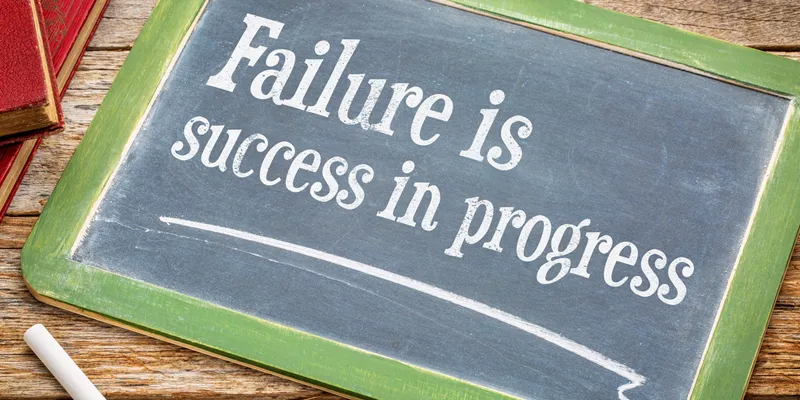
YS: Is there such a thing as the ‘ideal age’ for an innovator, or can the innovation bug strike you at any time?
JD: This is a deceptively complex question. Research suggests that our most creative years occur in our late 20s and early 30s. There are two main conventional explanations. One proposes that younger innovators have less to lose early in their careers. They need to find a new way to become part of the established order dominated by those more experienced.
The other view suggests a neurobiological explanation pointing to a steady decrease in brain function with age. Still, as the miracle of science extends our lives and Baby Boomers continue to work well past the traditional retirement age, we will certainly see more innovations by those who are no longer on the sunny side of the hill. So, we will have to wait and see if the conventional explanations are still valid in the next few decades.
YS: How should startup founders balance their own archetypes with others as the core team is being formed?
JD: Startup founders need to recognise that their biggest strength – the quality that makes them stand out from other people – can also be their greatest downfall. We all have an underlying worldview that determines the way we approach the challenges we face. Some people are big-picture thinkers. Others fixate on particulars. Some people are pragmatic and by-the-book when it comes to solving problems. Others are dreamers. I call this fundamental perspective your core competency or dominant logic.
The problem is that our dominant logic overpowers all other points of view. We become prisoners of our own ideology. Left by themselves, the pragmatic thinkers become bureaucrats. The big-picture thinkers become chaotic. The goal-oriented thinkers become control freaks. The patient thinkers become irrationally enthusiastic. To balance their own archetype with others, startup founders should embrace their dominant logic while complementing it by surrounding themselves with thinkers of all kinds.
The best teams are like bands of superheroes: each member acknowledges and makes use of his or her gifts and talents but they don’t let those superpowers limit them. They use them at the appropriate moments and then stand back and let their partners take over. Ideal solutions to the most complicated problems will never involve just one mode of thinking. They always require a cross-boundary, interdisciplinary approach that takes advantage of multiple–and often seemingly contradictory–mindsets and ranges of skills.
Innovation is not about alignment. It is about constructive conflict – positive tension, and startup founders need to be comfortable getting uncomfortable.

YS: What are your top five tips on how to structure interactions between people from the four archetypes?
JD: My top five tips for leaders are the following:
- Avoid getting stuck in the centre. When a large group of people has ideas and they all share them, there is the danger that everyone will get pulled to the centre and be reduced to something banal or unexceptional. This is a concept first introduced by Sir Francis Galton, who showed how more and more points of data or measurements result in a regression to the mean. Don't let the multiplicity of ideas at a brainstorming session get flattened out into a mass of mediocrity. Keep challenging yourself and those around you to go outside of the expected limits and boundaries of your project.
- Remember the importance of expertise. Collaboration assumes a horizontal structure of activity. That is, everyone involved is suddenly on the same level. This democratic attitude can be a great thing, yet people sometimes forget the centrality of expertise. You can ask all the people on your Facebook newsfeed how to do a root canal, but you're always going to seek out a professional dentist. Don't just solicit the opinion of the masses when you're building your innovation team - find experts in the fields relevant to your initiative.
- Surround yourself with people unlike you. Find the people who can fill in your blind spots and help you with things you don't know now. This means embracing individuals you may have nothing in common with: thinkers who see the world differently than you do. Gather the talents of those who can teach you and give you things that you cannot give yourself.
- Drop the ‘everyone's opinion is equal’ facade. You probably learned in gym, math, or art class that we are not all equally skilled. While we all have our own strengths (and weaknesses), all those abilities are not relevant in every situation. Once you determine the abilities you need for a particular project, prioritise the contributions of those who have the expertise. For highly specialised tasks and areas of inquiry associated with innovation initiatives, people’s skills are valued more highly at different times.
- Mix and match until you find your winning team. Collaboration works best when we find the right combination of thinkers and doers. Put the highly experienced alongside the inexperienced. Experience brings the wisdom of caution - seasoned veterans won't do things that they know won't work. Inexperience brings heightened ambition. Novices will push the veterans to bring their knowledge into new areas. Join domain experts with out-of-domain experts. The domain experts have deep insight when it comes to things that are possible. Out-of-domain experts have equally deep insight when it comes to things that are transferrable. A wonderful example of this is the way Google pairs Math PhDs with software developers. When someone who knows a lot about one domain partners with someone who knows a lot about another, the result is an unstoppable team.
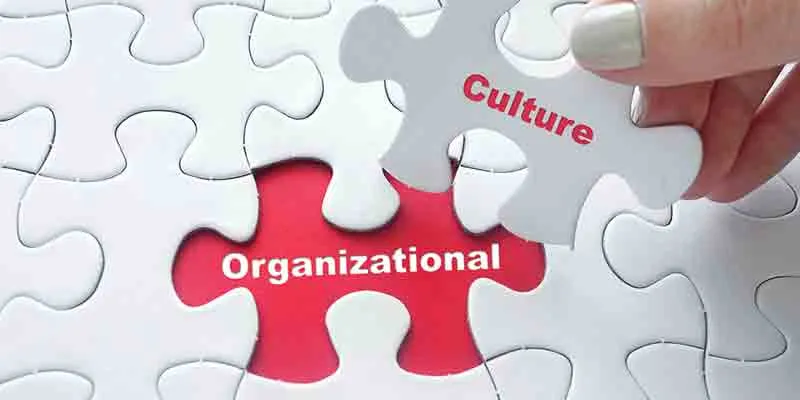
YS: How should manager succession planning be handled to introduce new archetypes or preserve existing ones?
JD: Every company goes through a cycle of growth, maintenance, decline and regeneration. These continuous and discontinuous S-curves are sometimes called Schumpeter Shifts after the great innovation economist. This is not only true for organisations, but also for teams.
In other words, the best type of person to start a project, an Artist, is probably not the best person to put it into operation, the Engineer. So, the introduction of a new archetype should fit the type of value the situation requires. If there is tension in the succession, let’s say from a Sage to an Athlete, it is important to keep it positive. The constructive conflict needs to be focused on ideas, not people. Respect for diverse views is essential.
YS: Are there variations of or additions to these four archetypes in other countries of the world – such as, say, in Europe and Asia?
JD: My family came from Europe and my wife is Asian. I have over two million miles on one airline alone. So, I am relatively familiar with cultural differences. In my travels, I have seen all four archetypes in most cultures. Of course, there are some slight differences in how they appear.
Think of it like the characterisations of Santa Claus around the world. It is the same character with a different look. Cultures have a tendency to lean in one direction or another: China is slightly a Sage culture, the US an Athlete culture, Japan an Engineer culture, and the Netherlands an Artist culture. Still, these differences are slight and often exaggerated.
YS: How should people keep themselves open for adopting an innovative career later in life?
JD: It is important to recognise that everything in this world costs something. The fact is that most of us want what we don’t possess now, but fail to consider what we must give up to get it. It is not that we can’t have it all. In fact, we can. It is the cost of having it all that we are unwilling to acknowledge. Time and resources bind our capacity. Are you the only person you know who is overbooked?
It is easy to start new things. It is hard to stop old things because they represent our commitments and sense of duty to those we love. It’s not just about you. We live in families and communities where our changes ultimately become theirs. No matter what age, be aware that having an innovative career is going to cost something, and to keep yourself open you need to recognise what you are willing to give up.
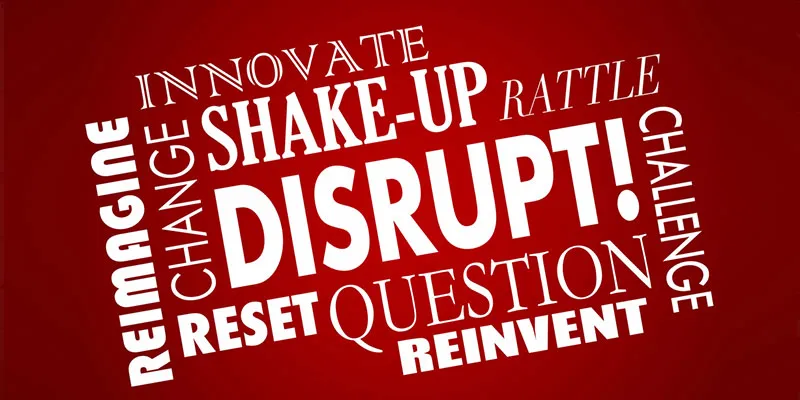
YS: What is your next book going to be about?
JD: It is about the multiple levels of creativity, and how to develop them. Most books about creativity treat the matter as if anyone can become a master innovator simply by following a recipe. That is ridiculous. All learning is developmental. Can you do tensor calculus if you haven’t first mastered algebra? You have little chance of being a master at anything without going through the failure cycle.
I have been studying and researching creativity at work for decades, and have taught some of the most celebrated innovators of our time. My next book will offer some tried and true methods to truly develop your creative abilities, and how to use them to produce valuable results. It should be published late next year.
YS: What is your parting message to the startups and aspiring entrepreneurs in our audience?
JD: The opportunity to innovate may be right in front of your eyes, but turn around or blink and you will miss it! Seizing on a moment of potential growth or creativity is about having the right field of vision. Entrepreneurs often look in the wrong places at the wrong time. Many seek out the so-called next big thing when they want to innovate, searching for medical breakthroughs or new technologies. But in reality, anticipation of these major developments and discoveries requires a very high level of expertise and access to research databases and universities. These are things that entrepreneurs simply do not have at their disposal.
An innovation does not have to be radical to be meaningful or worthwhile. Instead of trying to find something no one has seen before, create extensions to current solutions. Take something that already exists and make it a little different or better. Three places to look for a better line of sight are:
- Find inefficiencies and fix them. Observing when and where services are untimely is a great way to locate high-potential innovation initiatives. The relevant example is the recent series of simple but game-changing improvements made to travel. These innovations did not require a massive amount of capital – they were just opportunities to apply low-level technologies to an existing inefficiency.
- Find complexity and eliminate it. Identify systems that are unnecessarily complicated or that rely too heavily on bureaucratic procedures and make them simpler. Getting rid of needless complexity is exactly the motivation behind innovations in college admissions and registration. What is significant about these seemingly minor developments is their power to make a once-tortuous procedure turnkey.
- Pay attention. Look up, look down, look all around yourself. Look for the things that other people don’t see. Chances are if you see an obvious occasion to innovate, other people see it, too. So look for subtle patterns, small holes, tiny inconsistencies, minor inefficiencies. The opportunity to innovate may be inside something you see every day, but you will never see it if you don’t look close enough.
